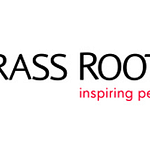With only 3 in 10 people believe that their opinions count at work (Gallup), we look at how psychological safety is linked to employee engagement.
What is Psychological Safety?
Psychological safety at work is about people feeling comfortable to be themselves.
For employees to flourish, the workplace must be one where people feel able to share their knowledge. This includes sharing concerns, questions, mistakes and half formed ideas.
As Professor Amy Edmondson of Harvard University identifies, just as the engine of growth in the industrial revolution was standardisation, with workers as labouring bodies, confined to execute, ‘the one best way’ to get almost any task done, growth today is driven by ideas and ingenuity.
Research has also shown that increasing psychological safety is also seen to increase employee engagement levels with an increase in trust and respect for the organisation and its leaders and organisations. Whilst organisations may have spent significant time developing engagement surveys and tools, without the trust and respect that improved levels of psychological safety bring, optimum levels of engagement, and all the benefits it brings, will not be achieved.
People must be able to collaborate with each other to solve problems and accomplish work that’s perpetually evolving in order for the organisation to be sustainable. And having engaged employees are crucial to achieving this.
Yet, according to Gallup, only 3 in 10 people believe that their opinions count at work.
In most workplaces today, people are holding back far too often. Reluctant to say or ask something that might somehow make them look bad. This is where we use the term “psychological safety” to explain the perceived levels of difference.
Employees are failing to speak up with potentially threatening or embarrassing content or withholding ideas for improvement because they fear they will seen in a bad light, fear they will be labelled negatively or that by speaking up they will damage work relationships.
Increasing psychological safety can make the difference between; a satisfied customer or angry customer sending a damaging tweet that goes viral; an accurate complex patient diagnosis or sending a patient home too early; between a near miss and an industrial accident; or between strong headline performance and dramatic headline grabbing failure.
Psychological safety creates a source of value within teams where people can pursue excellence, and allows your organisation to thrive in a complex, uncertain and increasingly interdependent world, particularly now as we steer a cautious route to a new world of hybrid working.
Organisations maybe focused on hiring talent, but to unleash this talent, it is critical to create an environment where employees feel free to contribute ideas, share information and report mistakes.
Why is it important today?
Diversity and inclusion at work has never been so important. Many struggle to know where to start, or how to bring such tricky dynamics into conversations at work. At worst, some fear that they may inadvertently say the wrong thing that may create further tensions or as a result, be accused of discrimination.
Building an inclusive and supportive working environment for all employees, free from harassment, bullying, discrimination or abuse is everyone’s responsibility.
Having open and honest conversations with each other is a good place to start but with so many barriers to communicating effectively, how do you engage staff if they don’t feel psychologically safe to contribute?
In April 2021, the Government published its ‘Writing about ethnicity’ guidance as an approach to how we use language to avoid certain words and phrases and describe ethnic minorities and different ethnic groups.
At the NHS South West London CCG where its ambition is to make south west London a great place to work, the organisation invited staff for their views on the guidance.
A large number of staff from across six boroughs (Croydon, Kingston, Merton, Richmond, Sutton, and Wandsworth) joined in the conversation and at the end agreed to avoid using the terms BME and BAME, which are broad catch-all terms for black, Asian, and minority ethnic groups of people – terms that actually do more harm than good.
Zamila Bunglawala, Deputy Head of Unit & Deputy Director Policy and Strategy, Race Disparity Unit, Cabinet Office expressed the same feelings in her blog Please, don’t call me BAME or BME!.
As the organisation continues its journey to being equal, diverse, and inclusive, it is clear that there needs to be an inclusive language and conscious style-guide to help staff communicate effectively.
By removing communication barriers such as: fear of saying something wrong, offending others, pronouncing names incorrectly, or fear of being politically incorrect, you can create a psychologically safe place for people to have the confidence to contribute their thoughts and opinions, increasing the level of employee engagement, which for the NHS, means better outcomes for the population it serves.
To be fluent in an inclusive language will take time, but for now, it helps to remember “People will forget what you said, people will forget what you did, but people will never forget how you made them feel.” Maya Angelou
How to develop the habit of psychological safety
Creating psychological safety as a leader requires courage and curiosity.
Here are some quick starter ideas that build on these two essential ingredients:
- Invite others to contribute – As a leader, make a habit of putting your ideas after those of others to help keep the idea space open for longer. When you do put an idea in, use tentative language such as “I’m wondering if…” This opens up the space for consideration, particularly in the minds of those who have a high need for autonomy. It also helps invite and give unconscious permission for feedback and exploration by others. This is how you might get early ideas on where the possible roadblocks could be so you can plan for them.
- Ask everyone – Explicitly invite other contribution by asking “What are your views on this?” Whilst you may get a mixture of both positive and negative views by giving all views space it will help foster a culture of respectful dialogue for the future.
- Invite people to expand their thoughts – To draw out what people value especially when developing actions, and to grow a sense of connection and safety, ask “Tell me more” or “What about this do you see as important?”. It is much less confrontational than to ask “Why?”.
- Say “Yes” rather than “No” – Say yes to the contribution and joining in the dialogue, even if you don’t agree with the idea. Affirm the idea by identifying the positive aspect of their contribution, for example, “We can’t do this because staff are already over worked.” Or “ Yes you are right, they are stretched and we need to be fully mindful of this, thank you for raising this.”
- Use AND instead of BUT – When we use the word AND we are showing that we value both their opinion and ours. When we use the word BUT it has the effect of making the other person think that we are dismissing what they have just said. Again, signally that all views are valued and promoting a culture of inclusion, for example, “How can we ensure staff don’t feel overwhelmed and we start to take action on embedding the new system?”
Our sincere thanks to our authors and Engage for Success volunteers:
Dr Ann Terry, Engaging Solutions
Frazer Rendell, e-trinity Consulting
Monica Pabualan, South West London Communications Manager, NHS South West London Clinical Commissioning Group.




